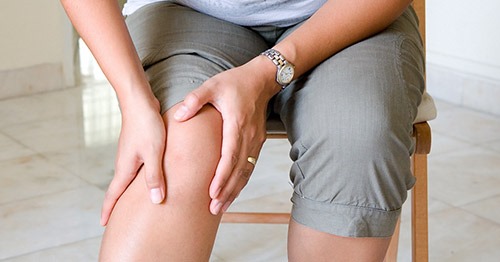The Silent Thief of Mobility: Understanding and Managing Knee Pain from Prolonged Sitting

Prolonged sitting, a hallmark of modern life, has become an insidious threat to our health, impacting everything from our posture to our metabolism. But one of the most common and debilitating consequences is knee pain. This article delves deep into the causes, symptoms, and effective management strategies for knee pain caused by prolonged sitting, empowering individuals to reclaim their mobility and well-being.
The Biomechanics of Knee Pain
The knee joint is a complex structure designed for movement. Prolonged sitting places undue stress on this delicate joint, leading to various issues:
- Tightness and weakness: Inactivity tightens muscles and weakens supporting structures, making the knee vulnerable to pain and overuse injuries.
- Joint stiffness: Sitting restricts synovial fluid circulation, which lubricates and nourishes the joint, leading to stiffness and pain upon movement.
- Increased pressure: Sitting puts pressure on the kneecap and surrounding tissues, causing discomfort and inflammation.
- Postural misalignment: Poor sitting posture can misalign the bones and joints, leading to uneven pressure distribution and pain.
These factors, compounded by existing knee conditions or age-related changes, can manifest as various symptoms:
- Dull ache or pain around the kneecap or joint line
- Stiffness and difficulty flexing or extending the knee
- Popping or cracking sounds in the knee joint
- Swelling or redness around the knee
Research Insights: The Link Between Sitting and Knee Pain
Several research studies have established a clear link between prolonged sitting and knee pain. A 2017 study published in the Journal of Physical Therapy Science found a positive association between sitting time and knee pain in adults. Similarly, a 2020 study published in the Annals of the Rheumatic Diseases found that individuals with higher sitting time were more likely to experience knee osteoarthritis.
These findings highlight the importance of addressing prolonged sitting to prevent and manage knee pain.
Expert Advice: Strategies for Relieving and Preventing Knee Pain
Fortunately, managing and preventing knee pain caused by prolonged sitting is possible through a multi-pronged approach:
- Reduce sitting time: Aim to break up your sitting every 30 minutes with short bursts of movement, such as walking, stretching, or standing.
- Invest in an ergonomic workstation: Adjust your chair and desk height to ensure proper posture and minimize pressure on your knees.
- Strengthening exercises: Regularly strengthen your leg and core muscles to support your knee joint and improve stability.
- Stretching: Incorporate regular stretches for your hamstrings, quadriceps, and calves to maintain flexibility and reduce stiffness.
- Maintain a healthy weight: Excess weight puts additional stress on your knees, so maintaining a healthy weight through diet and exercise can significantly reduce pain.
- Listen to your body: Don’t ignore pain. Take breaks when needed and seek medical advice if the pain persists or worsens.
Dr. Michael Fredericson, a renowned orthopedic surgeon, emphasizes:
“Knee pain from prolonged sitting is often preventable and manageable with a proactive approach. Incorporating movement into your day, strengthening your muscles, and maintaining good posture are key steps on the road to pain-free knees.”
When to Seek Medical Attention
While most cases of knee pain caused by prolonged sitting respond well to lifestyle changes and self-management strategies, some situations necessitate seeking medical attention:
- Severe pain that interferes with daily activities
- Joint instability or difficulty walking
- Swelling or redness that persists or worsens
- Warmth or fever around the knee joint
- **Previous knee injuries or existing medical conditions
Consulting a physician can help diagnose the underlying cause of your pain and recommend appropriate treatment options, such as physical therapy, medication, or injections.
Technology and Tools for Relief
In today’s tech-driven world, several innovative tools can support your efforts to manage knee pain:
- Adjustable standing desks: Allow you to alternate between sitting and standing throughout the day.
- Activity trackers: Monitor your sitting time and remind you to move.
- Ergonomic chairs and cushions: Provide additional support and comfort for your knees and back.
- Mobile apps: Offer guided exercises and stretches for strengthening and improving knee flexibility.
These tools can be valuable additions to your self-management strategy, helping you stay active and informed about your knee health.
Conclusion: Taking Control of Your Knee Health
Prolonged sitting can undoubtedly contribute to knee pain. But by understanding the causes, symptoms, and effective management strategies, you can reclaim your mobility and enjoy a pain-free life. Remember, movement is key. Break up your sitting time, engage in regular exercise, and prioritize your health. By taking control of your lifestyle and seeking help when needed, you can keep your knees strong and healthy for years to come.
This Article is for information purpose only, for better and personalized advise consult your doctor.








